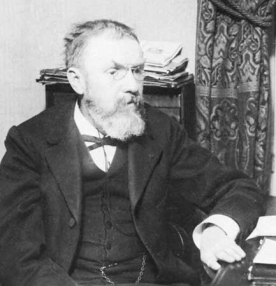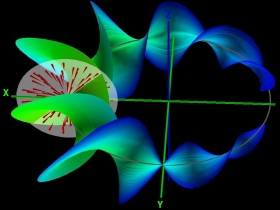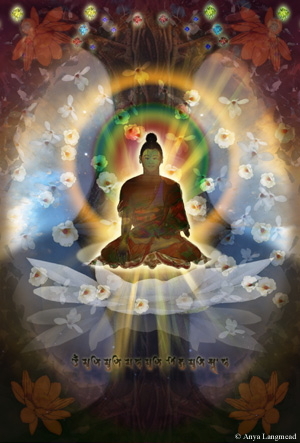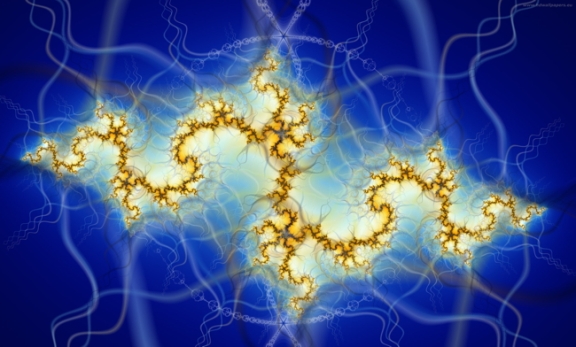
Thanissaro Bhikkhu
Samsara Divided by Zero
“The goal of Buddhist practice, nibbana, is said to be totally uncaused, and right there is a paradox. If the goal is uncaused, how can a path of practice — which is causal by nature — bring it about? This is an ancient question. The Milinda-pañha, a set of dialogues composed near the start of the common era, reports an exchange where King Milinda challenges a monk, Nagasena, with precisely this question. Nagasena replies with an analogy. The path of practice doesn’t cause nibbana, he says. It simply takes you there, just as a road to a mountain doesn’t cause the mountain to come into being, but simply leads you to where it is.
Nagasena’s reply, though apt, didn’t really settle the issue within the Buddhist tradition. Over the years many schools of meditation have taught that mental fabrications simply get in the way of a goal that’s uncaused and unfabricated. Only by doing nothing at all and thus not fabricating anything in the mind, they say, will the unfabricated shine forth.
This view is based on a very simplistic understanding of fabricated reality, seeing causality as linear and totally predictable: X causes Y which causes Z and so on, with no effects turning around to condition their causes, and no possible way of using causality to escape from the causal network.
 However, one of the many things the Buddha discovered in the course of his awakening was that causality is not linear. The experience of the present is shaped both by actions in the present and by actions in the past. Actions in the present shape both the present and the future. The results of past and present actions continually interact. Thus there is always room for new input into the system, which gives scope for free will. There is also room for the many feedback loops that make experience so thoroughly complex, and that are so intriguingly described in chaos theory. Reality doesn’t resemble a simple line or circle. It’s more like the bizarre trajectories of a strange attractor or a Mandelbrot set.
However, one of the many things the Buddha discovered in the course of his awakening was that causality is not linear. The experience of the present is shaped both by actions in the present and by actions in the past. Actions in the present shape both the present and the future. The results of past and present actions continually interact. Thus there is always room for new input into the system, which gives scope for free will. There is also room for the many feedback loops that make experience so thoroughly complex, and that are so intriguingly described in chaos theory. Reality doesn’t resemble a simple line or circle. It’s more like the bizarre trajectories of a strange attractor or a Mandelbrot set.
Because there are many similarities between chaos theory and Buddhist explanations of causality, it seems legitimate to explore those similarities to see what light chaos theory can throw on the issue of how a causal path of practice can lead to an uncaused goal. This is not to equate Buddhism with chaos theory, or to engage in pseudo-science. It’s simply a search for similes to clear up an apparent conflict in the Buddha’s teaching.

Jules-Henri Poincaré
And it so happens that one of the discoveries of non-linear math — the basis for chaos theory — throws light on just this issue. In the 19th century, the French mathematician Jules-Henri Poincaré discovered that in any complex physical system there are points he called resonances. If the forces governing the system are described as mathematical equations, the resonances are the points where the equations intersect in such a way that one of the members is divided by zero. This, of course, produces an undefined result, which means that if an object within the system strayed into a resonance point, it would no longer be defined by the causal network determining the system. It would be set free.
In actual practice, it’s very rare for an object to hit a resonance point. The equations describing the points immediately around a resonance tend to deflect any incoming object from entering the resonance unless the object is on a precise path to the resonance’s very heart.
 Still, it doesn’t take too much complexity to create resonances — Poincaré discovered them while calculating the gravitational interactions among three bodies: the earth, the sun, and the moon. The more complex the system, the greater the number of resonances, and the greater the likelihood that objects will stray into them. It’s no wonder that meteors, on a large scale, and electrons on a small scale, occasionally wander right into a resonance in a gravitational or electronic field, and thus to the freedom of total unpredictability. This is why meteors sometimes leave the solar system, and why your computer occasionally freezes for no apparent reason. It’s also why strange things could happen someday to the beating of your heart.
Still, it doesn’t take too much complexity to create resonances — Poincaré discovered them while calculating the gravitational interactions among three bodies: the earth, the sun, and the moon. The more complex the system, the greater the number of resonances, and the greater the likelihood that objects will stray into them. It’s no wonder that meteors, on a large scale, and electrons on a small scale, occasionally wander right into a resonance in a gravitational or electronic field, and thus to the freedom of total unpredictability. This is why meteors sometimes leave the solar system, and why your computer occasionally freezes for no apparent reason. It’s also why strange things could happen someday to the beating of your heart.

Buddha – Anya Langmead
If we were to apply this analogy to the Buddhist path, the system we’re in is samsara, the round of rebirth. Its resonances would be what the texts called “non-fashioning,” the opening to the uncaused: nibbana. The wall of resistant forces around the resonances would correspond to pain, stress, and attachment. To allow yourself to be repelled by stress or deflected by attachment, no matter how subtle, would be like approaching a resonance but then veering off to another part of the system. But to focus directly on analyzing stress and attachment, and deconstructing their causes, would be like getting on an undeflected trajectory right into the resonance and finding total, undefined freedom.
This, of course, is simply an analogy. But it’s a fruitful one for showing that there is nothing illogical in actively mastering the processes of mental fabrication and causality for the sake of going beyond fabrication, beyond cause and effect. At the same time, it gives a hint as to why a path of total inaction would not lead to the unfabricated. If you simply sit still within the system of causality, you’ll never get near the resonances where true non-fashioning lies. You’ll keep floating around in samsara. But if you take aim at stress and clinging, and work to take them apart, you’ll be able to break through to the point where the present moment gets divided by zero in the mind.”




 2011/11/17
2011/11/17 




I think it’s tricky talking about “paths of total nonaction.” First of all is such a thing possible? Sentient life is characterized by changes such as metabolism, emotion, thought, movement, etc. etc. But if this phrase refers to particular methods of practice in other traditions, then diminishing them is not helpful nor does it seem particularly insightful. At certain moments of practice inaction is the right move to make. ..
Steven…you are such a heartful buddhist, scientist and curious pilgrim on the journey. I love reading your Metta Blog. Thank you so much for making the world a better place with your curiosity!
Jude, why, thank you very much! I appreciate your kind words. To me, the world is such a wonder, and the fact of our conscious existence here is such a wonder, a deep curiosity about everything just feels like the only response that makes sense and gives meaning to life! 🙂
I’m glad you are enjoying the blog . It’s a great joy to share what I’ve learned and what has helped me with others. Thank you for visiting!
With warm metta,
Steve
I am so pleased to have found you. Everything I read is very enlightening and is helping me in my practise and study. Thank you. Namaste xx
Ruth, thanks you! I’m so glad. All of this comes from my heart — everything I post is stuff I working with, or on, and so your words are most encouraging.
Thank you for visiting and taking the time to comment.
With metta,
Steve
Nibbana is a place you get to? I thought it was what remains when you stop.
Hello “Naked Monk.” Thanks for stopping by. If you got the idea from this one essay that Thanissaro Bhikkhu thinks nibbana is a “place” that would be a misreading of his intent, I can assure you, and is totally at odds with all his other writings. I just know that talking about the unconditioned and unfabricated isn’t easy!
🙂
I think other Thanissaro Bhikkhu articles like this:
show that he’s not “stuck” in some idea of nibbana as a “place.”
For a much more complete explanation of his views, which are pretty much standard Theravadan —with “nibanna” as no “place 🙂 — then these two E-books are excellent document to consider:
Click to access TheMindLikeFireUnbound2010Edition.pdf
Click to access DependentCo-arising.pdf
Thanks for taking the time to comment. If you got this impression from the essay, then perhaps others did too, so it’s helpful to clarify the point.
With warm metta,
Steve